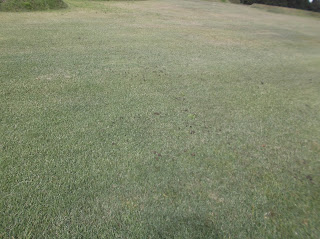Yairo (lit. eight colors) is the name of a place in Minami-Uonuma city that is famous for producing high-quality watermelons. Yairo also produces shiitake with thick fleshy caps, called Yairo Shiitake, as I previously mentioned here.
Tenkeiko is the name of the new variety of shiitake mushroom that was released on November 11, 2014. One obvious characteristic is its very large size, which can be up to 15 cm in diameter.
八色とは、高品質のスイカ(西瓜、すいか)を生産することで有名な、南魚沼市にある地域の名前です。八色ではまた、ここで述べたように「八色しいたけ」という肉厚のシイタケ(椎茸、しいたけ)も生産しています。
天恵菇(てんけいこ)とは、2014年11月11日に発表された、シイタケの新品種です。明らかな特徴の一つは、直径15センチにもなる、その大きさです。
Thus, Yairo Tenkeiko is the name of the large-size shiitake mushroom that is produced in Yairo, Minami-Uonuma City. I learned about this new variety from a famous TV show, Manten Aozora Restaurant (Japanese only).
従って、八色天恵菇とは、南魚沼市の八色で生産された、大型のシイタケのことです。この新品種については、有名なテレビ番組「満点☆青空レストラン」で知りました。
Luckily, I happen to live in that city, and I can get this new variety fairly easily at a supermarket, although I find it rather expensive.
運よく、私は、南魚沼市に住んでいるので、スーパーでかなり簡単に入手することができます。ちょっと値段が高いと思いますが。
The other day, of all the bags sold at the supermarket, I deliberately selected this one:
先日、スーパーで売られている袋の中から、私は慎重にこの袋を選びました:
Two large ones and one small one.大きいのが2つに、小さいのが1つ。
I first cooked one large one for my son, who is a kind of a mushroom freak. Simply wrapped in aluminum foil and grilled in the toaster oven.
まずは、大きいのを一つ、ちょっとキノコおたくっぽい息子に調理しました。ただアルミホイルで包み、オーブントースターで焼いただけです。
My son said it was very good. He didn't even need soy sauce or lemon juice to enjoy having it.
息子はとても美味しいと言っていました。しょう油やレモン果汁も使わずに、楽しんでいました。
***
Yesterday, I got another bag in an attempt to come up with a recipe to submit to a mushroom recipe contest. I can't talk about the recipe until the results of the contest are released.
昨日は、きのこレシピコンテストに応募するレシピを考えようと、もう一袋、買いました。コンテストの結果が発表されるまでは、そのレシピについては語れません。






































































